|

Rosita L.
Rivera
|
|
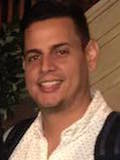
Edward Contreras
|
On 30 October 2017, faculty and students returned to school at
the University of Puerto Rico in Mayagüez (UPRM) after 6 weeks of the
devastation caused by hurricane Maria. It also marks Day 40 after the
impact of this category five cyclone that made landfall in our country.
The campus was full of students, which was very encouraging and
motivating, especially if we consider that many of them have lost their
homes. To add to this precarious situation, many continue to struggle to
meet their basic needs, which include access to food and potable water.
We would like to give you a brief account of our experiences before and
after coming back to school so that you have a better perspective of
our current situation at UPRM.
Maria was a category four hurricane with winds of 180 miles per
hour. Our entire country lost access to any means of communication. One
local AM radio station became the link among individuals, their
families, and the outside world. Because of this lack of access to the
outside world via phone, many of us drove through very dangerous roads
to reunite with our families and loved ones. There were roads that could
not be crossed for weeks, bridges that collapsed, and countless other
changes to our landscape. Some hospitals had to shut down as a
consequence of the island blackout and a lack of diesel to run their
generators. We lost access to running water and electricity. Even as we
write this, only 30% of the entire country has electrical power restored
and 70% have running water. To this day, we are still not sure how many
Puerto Ricans lost their lives due to this hurricane. The official
number officially reported by the government is 64, yet local and
international newspapers reported that 911
bodies were cremated without an autopsy. Some of the natural
causes of death reported by hospitals were lack of oxygen and insulin or
issues related to dialysis treatment, which were difficult to get at
the time. This issue and the inconsistencies reported by the government
regarding the cause of death of many Puerto Ricans after the hurricane
continues to be a major controversy due to discrepancies between funeral
homes and official government reports. Dealing with the ports and
distributing food and water to rural areas and here on the west coast
was also a challenge. For a while, those of us on the west coast of the
island did not receive any kind of help from anyone outside of our
communities. We as a community started clearing our roads and helping
our neighbors without any outside assistance. Yet, 40 days after the
hurricane, the chaotic situation on the island continues to revolve
around lack of potable water and electricity.
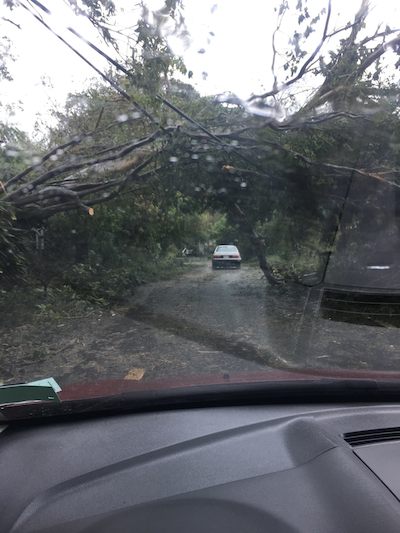
View from the rural area of Lajas, PR.
We were asked to report to work 2 weeks after the hurricane to
report any damage to university property and to help with the cleanup.
Three weeks later, the university was ready to receive the students. Our
classrooms this time were very different than the ones where we had
received our students 6 weeks earlier. The stories were as heartbreaking
as you could expect after such a devastating natural disaster. One of
our students had to ride out the storm in the bathroom of her house in a
rural town in the center of the island. Another student had to pick a
few belongings and rush out of their home because the flood was
imminent. As we heard the stories, we realized that we have all been
through a very traumatic chain of events that did not stop after the
hurricane was over. In fact, this is when much of the trauma began. The
Puerto Rico we knew has been erased and a new reality set in. This
reality was both tangible and frustrating. On one hand, we had our
landscape changed: everything from bridges collapsing to lack of any
sort of communication to lack of access to the most basic human needs.
On the other hand, our new reality and how to adjust to returning to
college after everything we have experienced individually and
collectively posed a major challenge. So, after shedding a few tears, we
started discussing what was yet to come and how students felt once they
returned to the university. All of a sudden, their eyes lit up and they
started talking about how happy they were to see and hug their
university friends. They were also content when they found out that many
of their housing areas had running water and electrical power. Many
even welcomed the structure of university activities, which gave us the
sense of normalcy that we all need.
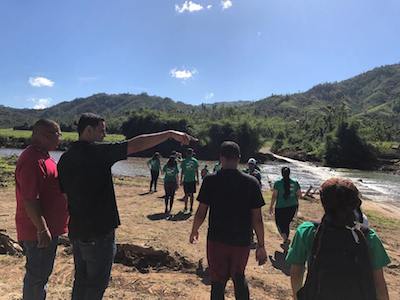
Students strategize crossing the provisional bridge in Morovis.
Current Challenges
The University of Puerto Rico
in Mayagüez has students from all over the island as well as from
countries around the world. Although our campus is currently one of the
very few places in Puerto Rico with electrical power and potable water,
students and professors face other challenges. Access to communication
has presented a major challenge for all of us as we return to school 40
days after the storm. Students have lost their personal belongings in
many cases and do not have enough money to eat or for other expenses.
Yet through this ordeal, we stand strong together. The university
community continues to support the student community through different
local initiatives and by accepting donations in the form of food,
clothing, and money. These grassroots initiatives ensure that students
get the help they need to continue their studies this semester while
maintaining an acceptable quality of life.
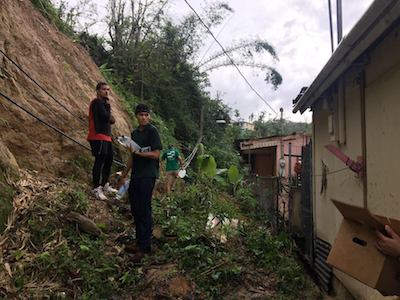
Students cross a rockslide to deliver supplies.
Ways to Support Our Students
We have some initiatives that are not only reliable, but also
effective at channeling and delivering all donations directly to
students and the community. These are also community-based projects that
are doing all they possibly can to get food and water to our students
and the surrounding communities. Here are some things you can do if you
wish to help us.
Support UPRM Come Colegial. This
organization is solely dedicated to providing food assistance in the
form of hot meals and groceries for our students in need. Out of 13,000
students, we had approximately 60 students registered before Hurricane
Maria. After the hurricane, the organization received more than 800
formal requests from students, and it continues to get additional
requests every day.
Donate to local organizations and grass root movements
that will ensure those who need help the most will receive it in a
timely manner. Non-profit organizations are the most effective
way of ensuring that your donations go directly to those in needs.
Besides Come Colegial and other local organizations, La Brigada
Solidaria del Oeste is providing help for other needs that are not
limited to food. This organization is also a grassroots movement and it
includes members of the community, professors, and local
philanthropists. At this time, La Brigada is helping by collecting
clothes, medication, and other items for our community, including UPRM
students. This organization is committed to delivering all donations
directly and to rebuilding these communities.
Suggested donations include water filters, batteries, clothes,
and canned food. Both organizations are also accepting monetary
donations. You may also contact the student council and their board for
additional information regarding our student population and their
initiatives. If you wish to contact these organizations, the links and
additional contact information are at the end of this article.
Allow and provide Puerto Rican students with
opportunities to participate in research and other educational
initiatives in your institutions. One way to help Puerto Rican students
is to provide them with spaces where they can grow professionally. At
this time, one of those initiatives is the collaboration between Penn
State University, Great Allegheny Campus and the Department of English
at UPR Mayagüez. This collaboration will allow ten students from the
English Department to visit PSU Great Allegheny Campus next semester and
conduct research while taking courses in that institution. These
initiatives will not only further their education, but will also provide
a new perspective that they can share when they return to UPRM to
finish their studies.
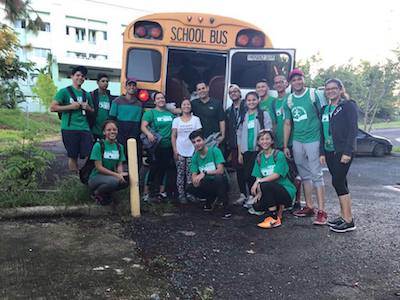
Students and professors get ready to visit the town of Morovis.
A Word of Hope
We as a community composed
of faculty and students in our ESL courses at UPRM finished the first
day of classes by discussing new plans for our courses with a new set of
activities and goals for the semester. We will now write our stories to
discuss narrative writing as a venue to reflect on our lived
experiences. While we continue to recover from our collective grief, we
will also work on a project-based unit in which we will have class
groups develop proposals on how to help others by providing concrete
ideas to solve a community problem and to imagine the future we want. We
as a language learning community in the Department of English at UPRM
will continue to learn from the past and make the necessary changes to
have the future we envision for our university and Puerto Rico at large.
We also hope you join us in our efforts.
Links
To contact the Student Council at UPRM, you may call +1
787.832.4040 ext. 3409 or reach out via email at cge@uprm.edu. You may also visit
their Facebook
page.
To donate to Come Colegial, you may contact Ms. Lucy Serrano at lucy.serrano@upr.edu or
via phone at +1 787.832.4040 ext. 3809. You may also visit their Facebook
page.
To for further information regarding Brigada Solidaria del
Oeste, you may visit their Facebook
page.
Rosita L.
Rivera, PhD, is a tenured professor in the Department of English at the
University of Puerto Rico in Mayagüez. She teaches ESL and applied
linguistics courses. She also teaches and collaborates with the Graduate
TESOL Certificate and the online TESOL Certificate, and coordinates
Project ITSLA for international students at UPRM.
Edward Contreras, MAEE, is an instructor in the
Department of English at the University of Puerto Rico in Mayagüez and a
PhD candidate at the University of South Florida. | 
